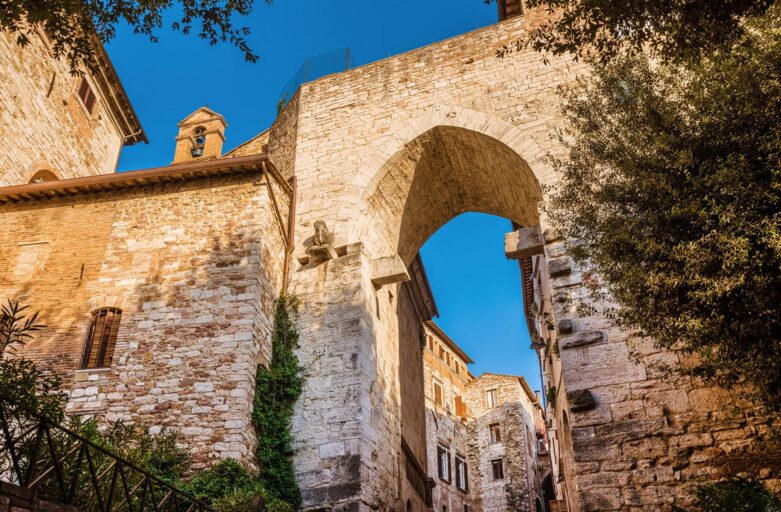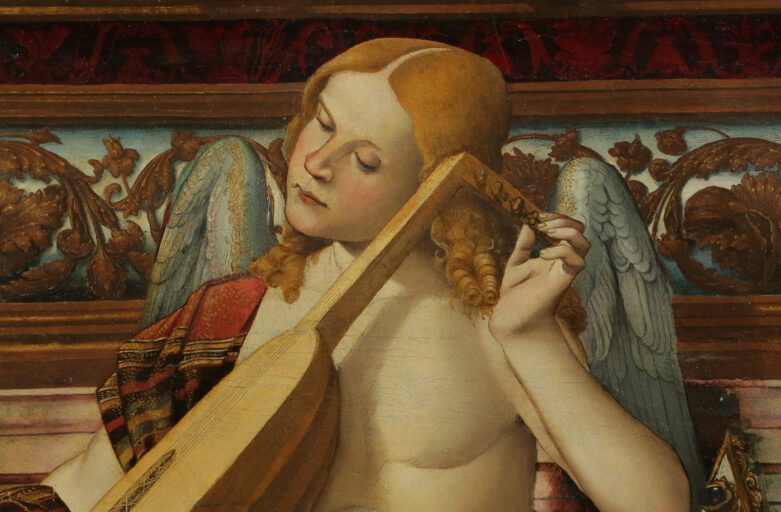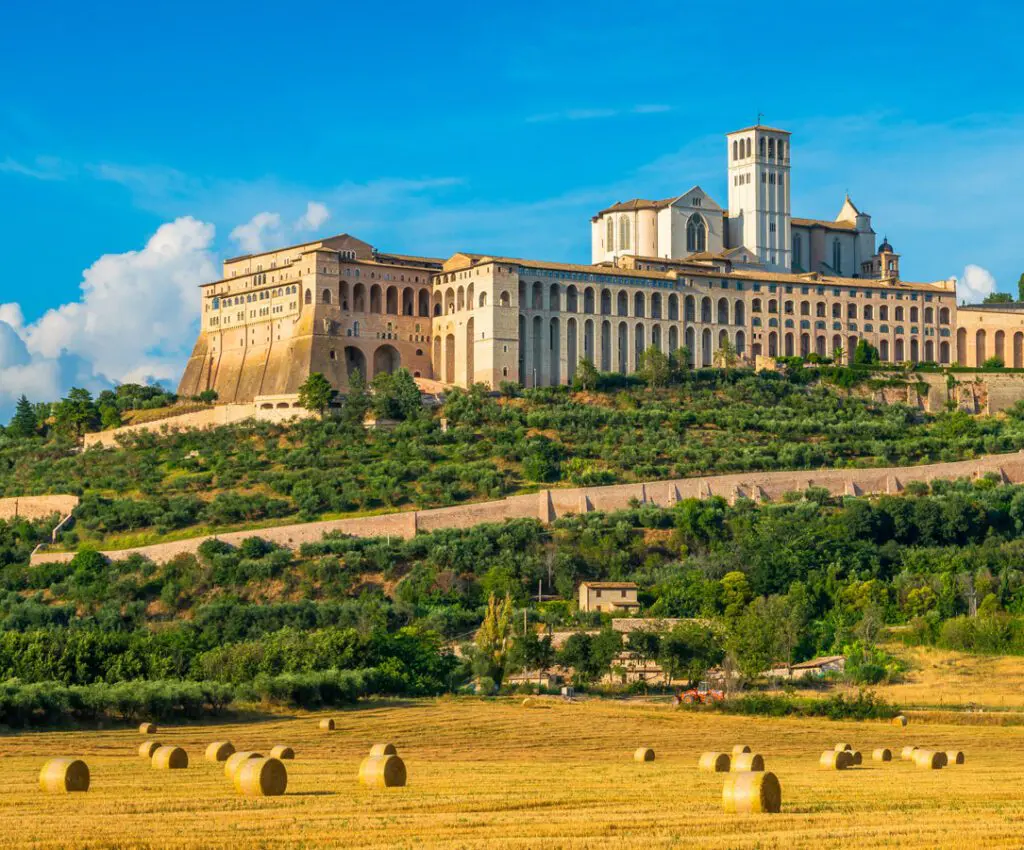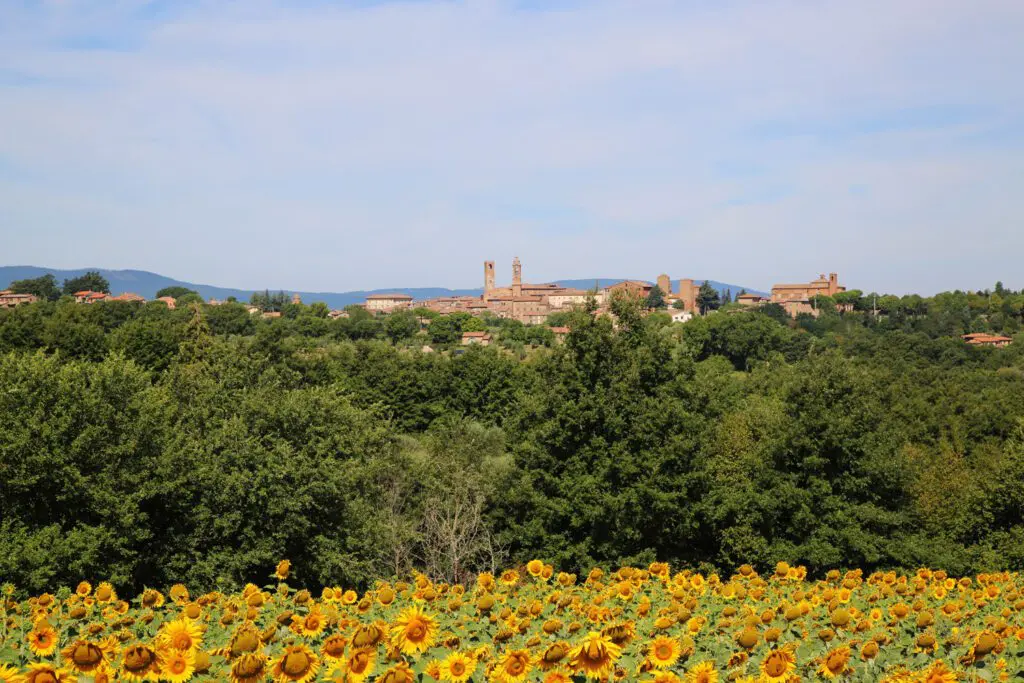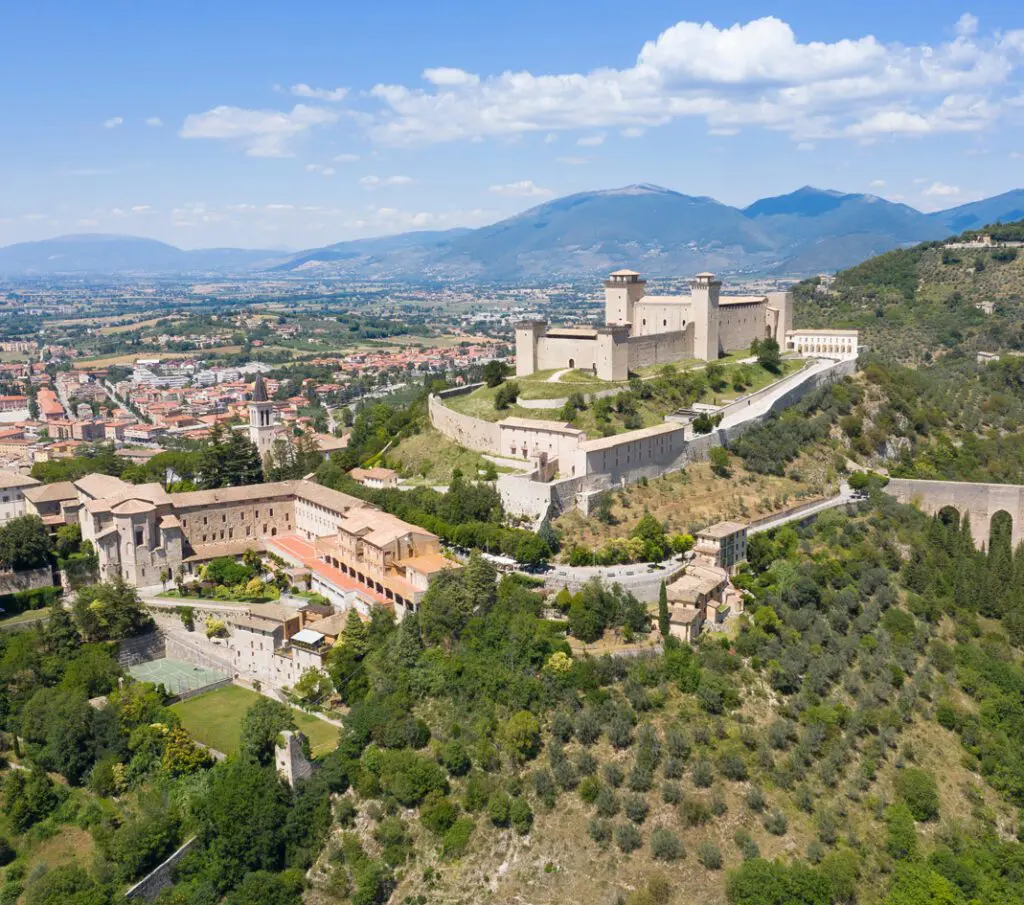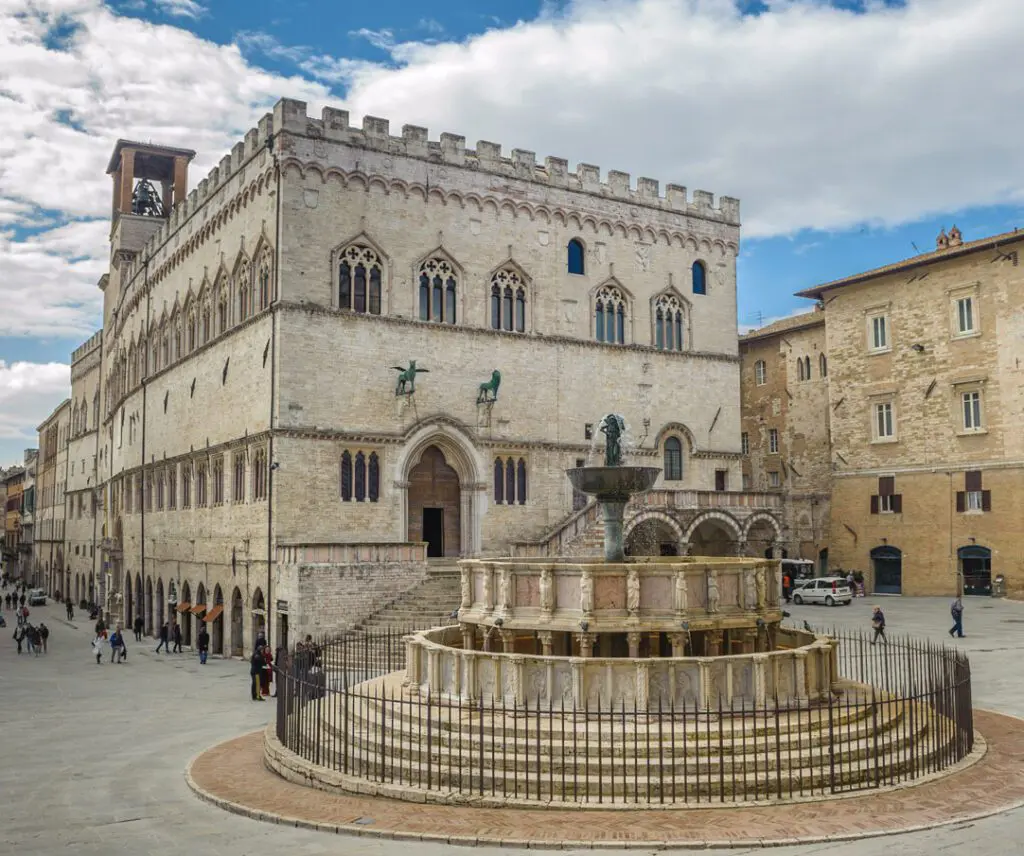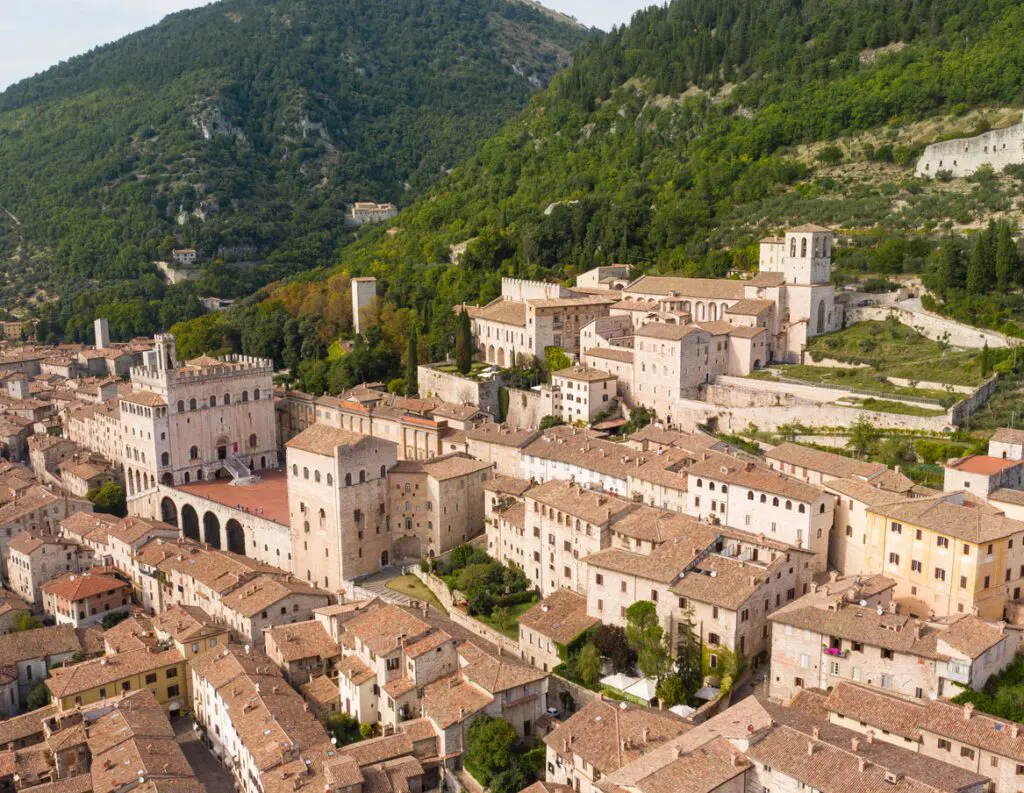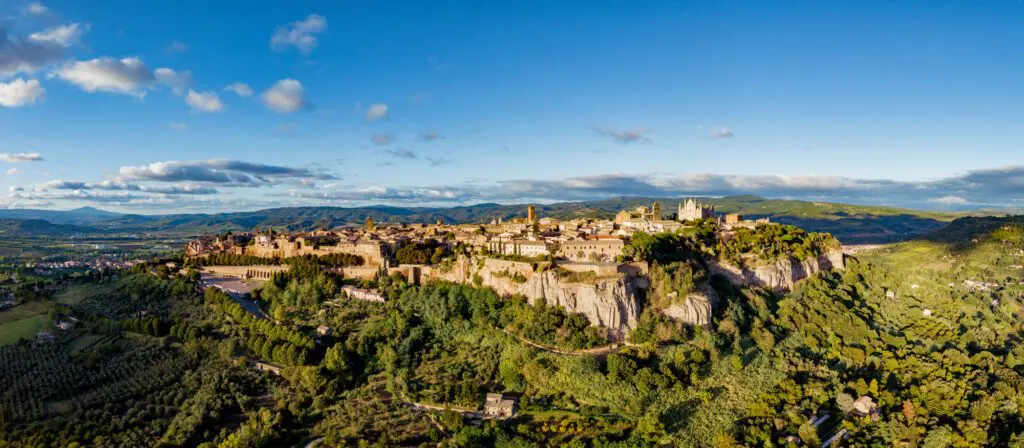The Fontana Maggiore, a gem of Gothic sculpture
The Fontana Maggiore (Great Fountain) is the sculptural symbol of Perugia. It was built in 1278 to celebrate the completion of a long aqueduct that, by taking cleverly advantage of the principle of communicating vessels, could even conduct water uphill on Perugia's hills. The fountain, surely among the oldest and most beautiful in Italy, is in fact considered a masterpiece of Gothic sculpture.
Its original shape consists of three concentric basins on top of one another, progressively smaller. The first two polygonal basins are in stone, embellished with no less than 74 sculptures; the third one, circular, ends with a mysterious sculpture representing three women who support an urn, and this is whence the water springs. The sculpture, conventionally called “the water carriers,” was the work of an artist from Perugia, Rubeus. Its meaning is still debated because the inscription along the basin circumference does not mention if, at that time, it referred to any specific symbol.
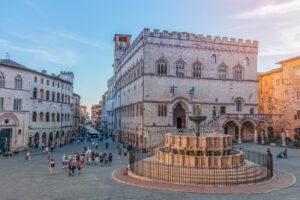
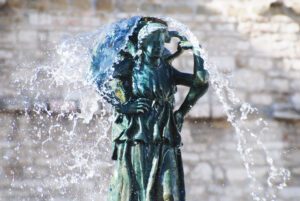
To Admire and Understand the Fountain
The 74 stone statues along the two polygonal basins were sculpted by Nicola Pisano and Giovanni Pisano, They were great 13th century artists who, together with Arnolfo di Cambio, regained skills that could be likened to the ancient Greek and Latin sculptors.
The panels on the lowest basin are low reliefs that show episodes from the Bible, allegories, the months of the year with their respective human activities, and the Liberal Arts. The statues on the central basin are high reliefs showing both historical and mythological personages, as well as allegoric figures.
But, both sculptural sets should be examined by the aid of some mental keys. The lower cycle, creating a sequence, can be better understood by going round the fountain anticlockwise starting from the first pair, the episode of the original sin in the Bible. As a matter of fact, it often happens to see people or groups making “a round around the fountain” to watch its statues. It proves however harder to grasp the meaning and beauty of the statues on the middle basin, set higher and therefore farther from our eyes. They are placed in an order that can hardly be guessed if you had no preliminary notion. This cycle is structured like a compass rose, the four statues in the direction of the cardinal points being the most important, and the meaning of the other twenty being in strict relationship with them. Unlike the “water carriers,” all the statues on the two polygonal basins display small inscriptions, carved in the stone, which indicate their subjects, making them easier to be understood – by scholars at least.
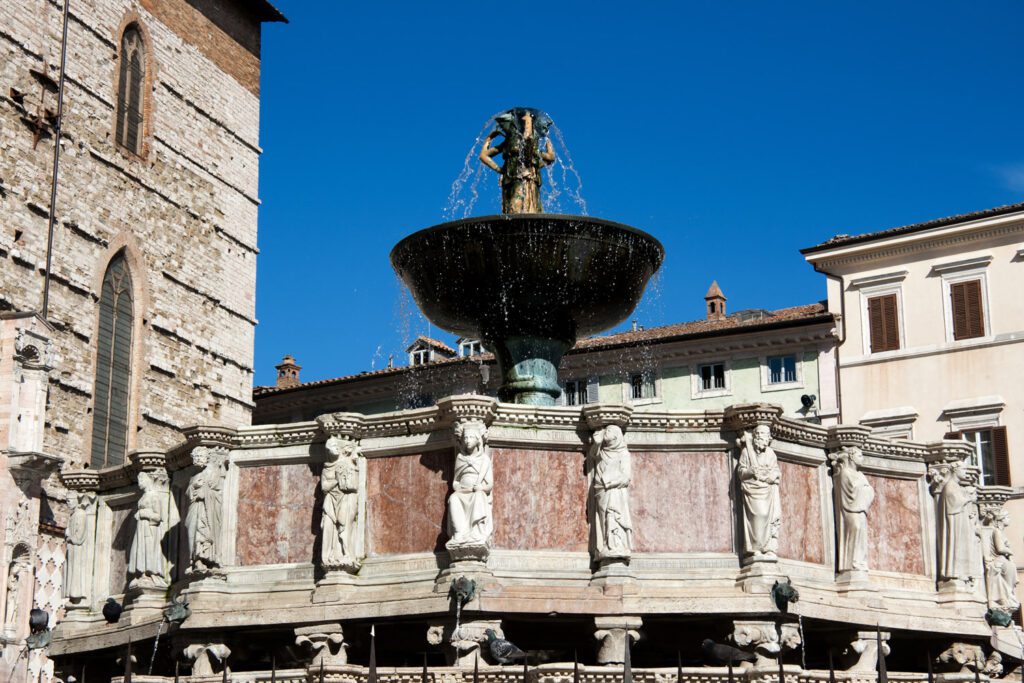
Medieval Genius and Engineering
The Fontana Maggiore of Perugia is a complex composition of geometrical figures, sculptures, and inscriptions; a true summa of Medieval culture – the unitary meaning of which, anyway, should not be neglected. The long inscription along the edge of the middle basin teaches as clearly as possible: the beauty of this fountain exalts the human genius, the creator of the aqueduct thanks to which such a great amount of water had been brought to the town.
Not far from Piazza IV Novembre (as the main square is now called, in memory of November 4, 1918, the end of the First World War), where the fountain is set between the Palace of Priors and Saint Lawrence's Cathedral, you can easily reach Via dell'Acquedotto, a street that runs precisely on the arches of the urban tract of the former Medieval aqueduct. In spite of what many people think, in the second half of the Middle Ages great scientific, and especially technological discoveries were made, that would provide the basis for the later development of Western civilization. The Fontana Maggiore and the aqueduct in Perugia are a wonderful example of it.
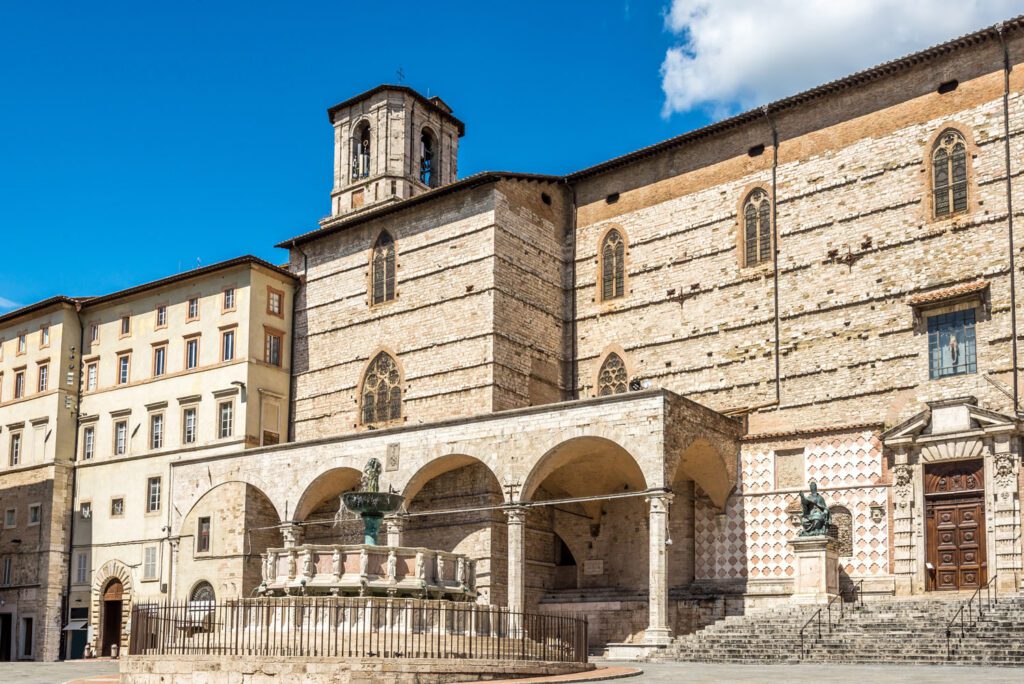
INFO
Location
Piazza IV Novembre, 06121 Perugia PG
Contacts
info@secretumbria.it
